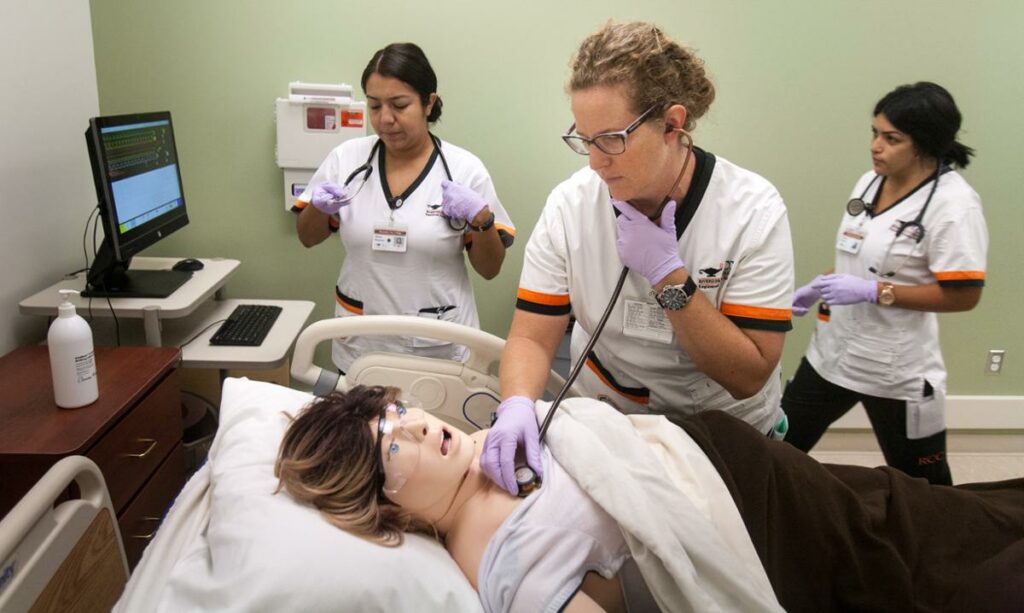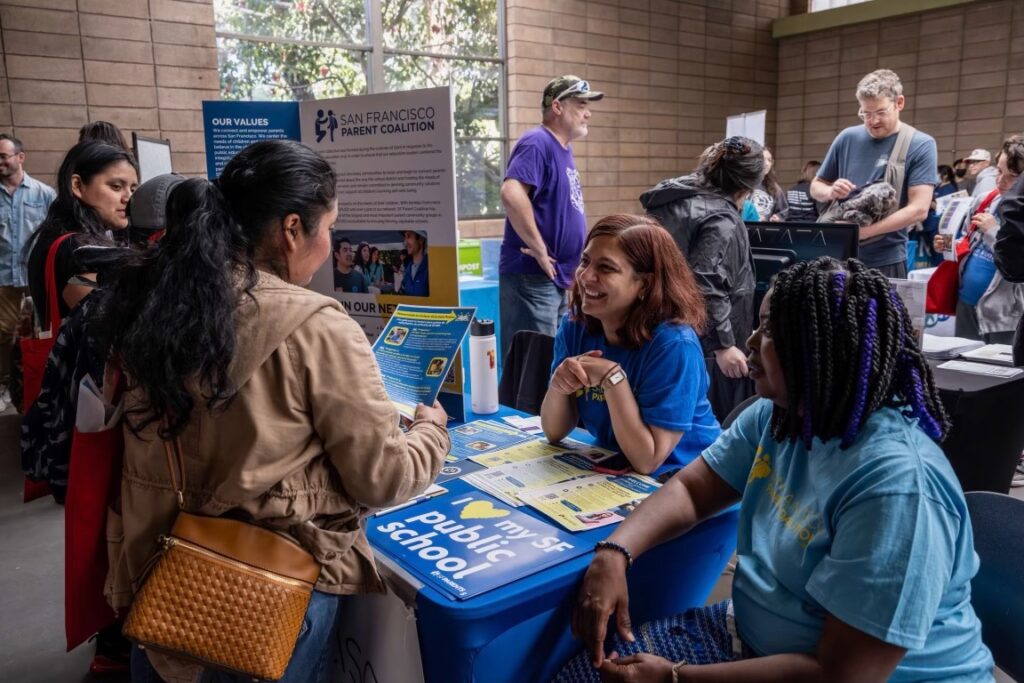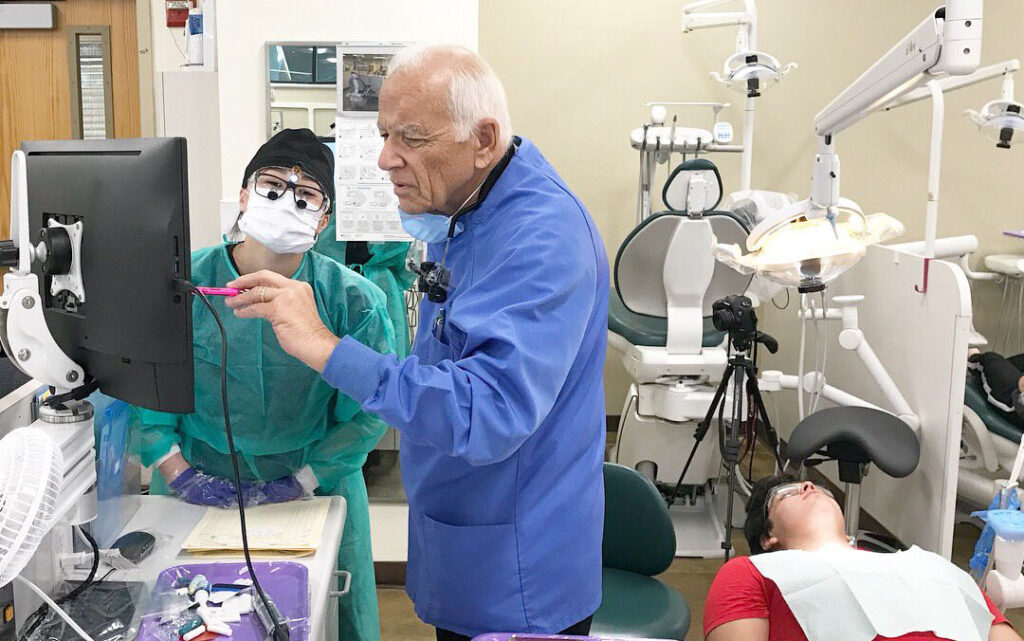Glenn Kessler is a professional fact-checker for The Washington Post. He recently reviewed a controversy about the consequences of the Trump administration’s shutdown of USAID. Democrats said that people have died because of the cuts; Secretary of State Marco Rubio did not agree. Kessler reviews the record.
He writes:
Secretary of State Marco Rubio: “No one has died because of USAID —”
Rep. Brad Sherman (D-California): “The people who have died …”
Rubio: “That’s a lie.”
— exchange at a congressional hearing, May 21
“That question about people dying around the world is an unfair one.”
— Rubio, at another congressional hearing later that day
When Rubio testified last week about the State Department budget, Sherman confronted him about numerous anecdotal accounts of people around the world dying because the Trump administration, at the direction of billionaire Elon Musk, dismantled the U.S. Agency for International Development and shut down many of its programs.
Sherman used his time mainly to pontificate, and Rubio’s attention must have wandered. He asked Sherman to repeat the question after Sherman said: “We next focus on USAID. Musk gutted it. He said no one died as a result. Do you agree no one had died yet as a result of the chainsawing of USAID? Yes or no.”
Sherman repeated: “Has anyone died in the world because of what Elon Musk did?”
Rubio stumbled a response — “Uh, listen” — and Sherman cut him off. “Yes or no?” he said. “Reclaiming my time. If you won’t answer, that’s a loud answer.”
That’s when Rubio said it was “a lie.” As Sherman’s staff held up photos of people alleged to have died because they stopped receiving services from USAID programs, Rubio denounced the claim as “false.”
Later in the day, at another hearing, Rep. Grace Meng (D-New York) gave Rubio an opportunity to clean up his statement. “Do you stand behind that testimony?” she asked. “And has there been any assessment conducted by the department to this point of how many people have died?”
Rubio said it was “an unfair question.” He tried to reframe the question, arguing that other countries such as Britain and France also have cut back on humanitarian spending, while China has never contributed much.
“The United States is the largest humanitarian provider on the planet,” he said. “I would argue: How many people die because China hasn’t done it? How many people have died because the U.K. has cut back on spending and so has other countries?”
There’s a lot to unpack there.
The facts
At least until the Trump administration, the United States was the largest provider of humanitarian aid in the world — in raw dollars. In the 2023 fiscal year, the most recent with complete data, USAID’s budget was about $42 billion, while the State Department disbursed about $19 billion in additional aid, and other agencies (such as the Treasury Department) did, as well. Now USAID is all but gone, folded into the State Department. Nonetheless, when the dust settles, the United States might still be the biggest aid donor — again, in raw dollars.
When measured as a percentage of a country’s economy, even before the Trump administration, the U.S. was far behind nations such as Britain, Norway, Sweden, Germany and the Netherlands. The United Nations has set a target of contributing 0.7 percent of gross national income in development aid; the U.S. clocks in with less than 0.2 percent, near the bottom of the list of major democracies, according to a 2020 report by the Organization for Economic Cooperation and Development. Most economists would say that a percentage of a nation’s economy is a more accurate way to measure the generosity of a country.
Rubio is correct that Britain and France have cut back, and that China has not been much of a foreign-aid donor. British Prime Minister Keir Starmer, for instance, said he would pay for increased defense spending by cutting the foreign-aid budget from roughly 0.5 percent of gross national income to 0.3 percent. (That is still higher than the U.S. share before President Donald Trump began his second term.) China’s aid budget is a bit opaque — numbers have not been published since 2018 — but it appears to be an average of just over $3 billion a year, according to the Brookings Institution.
But when it comes to whether people have died as a result of the Trump administration’s cuts, we have to look at how the cuts unfolded. Starmer announced his plans in a pending budget proposal. Trump signed an executive order on Jan. 20 imposing a 90-day freeze on all U.S. foreign aid — and then Musk forced out thousands of employees who worked at USAID, helping to manage and distribute funds. The resulting chaos was devastating, according to numerous news reports.
Sherman’s staff held up a photo of Pe Kha Lau, 71, a refugee from Myanmar with lung problems. On Feb. 7, Reuters quoted her family as saying she died “after she was discharged from a U.S.-funded hospital on the Myanmar-Thai border that was ordered to close” as a result of Trump’s executive order. The International Rescue Committee said it shut down and locked hospitals in several refugee camps in late January after receiving a “stop-work” order from the State Department.
Another photo held up as Rubio said the death claims were false was of 5-year-old Evan Anzoo. He was featured in a March article by New York Times columnist Nicholas Kristof titled: “Musk Said No One Has Died Since Aid Was Cut. That Isn’t True.” Kristof focused on South Sudan and the impact that a suspension of HIV drugs — under a George W. Bush program called PEPFAR — had on the poor country ravaged by civil conflict. PEPFAR, the President’s Emergency Plan for AIDS Relief, is regarded as a singular success, saving an estimated 26 million lives since it was created in 2003. Kristof focused on individual stories of people who died after they lost access to medicines because of Trump’s order.
“Another household kept alive by American aid was that of Jennifer Inyaa, a 35-year-old single mom, and her 5-year-old son, Evan Anzoo, both of them H.I.V.-positive,” Kristof wrote. “Last month, after the aid shutdown, Inyaa became sick and died, and a week later Evan died as well, according to David Iraa Simon, a community health worker who assisted them. Decisions by billionaires in Washington quickly cost the lives of a mother and her son.”
Anecdotal reports can go only so far. It’s clear that people are dying because U.S. aid was suspended and then reduced. But it’s difficult to come up with a precise death toll that can be tied directly to Trump administration policies. The death certificates, after all, aren’t marked “Due to lack of funding by U.S. government.”
Kristof cited a study by the Center for Global Development that estimated how many lives are saved each year by American dollars: about 1.7 million HIV/AIDS deaths averted; 550,000 saved because of other humanitarian assistance; 300,000 tuberculosis deaths prevented; and nearly 300,000 malaria deaths forestalled. But that shows the positive impact of U.S. assistance, not what happens when it is withdrawn.
Brooke Nichols, a Boston University infectious-disease mathematical modeler and health economist, has developed a tracker that attempts to fill this gap. As of Monday, the model shows, about 96,000 adults and 200,000 children have died because of the administration’s cutbacks to funding for aid groups and support organizations. The overall death count grows by 103 people an hour.
With any calculation like this, a lot depends on the assumptions. The methodology uses a straight-line estimate of program terminations based on 2024 data and published mortality data to estimate the impact of loss of treatment. Nichols said that because it is not entirely clear what aid has been restored, she has not updated the tracker to account for that. But she noted that Rubio claimed on Capitol Hill that “85 percent of recipients are now receiving PEPFAR services.”
“For HIV, the total mortality estimates reflect either a 3-month complete cessation of PEPFAR, or 12 months of PEPFAR reduced by 25 percent (the total results are the same),” Nichols said in an email. “If what Rubio says is true … and 85 percent of PEPFAR is back up and running, then the numbers here are still very accurate.”
In a statement to The Fact Checker, the State Department put it differently from Rubio: “85 percent of PEPFAR-funded programs that deliver HIV care and treatment are operational.” We asked for documentation for the “85 percent” figure, because the phrasing might not include funding for drugs that prevent HIV infection. We did not receive a response.
Nichols acknowledged that the tracker was not adjusted for double counting — a child counted as dying from malnutrition and diarrhea — though she didn’t think it would affect the overall results much. Some of the estimates are based on country-specific information; others are not. Data limitations required her to assume an equal distribution between children treated for pneumonia and diarrhea through USAID.
“The biggest uncertainties in all of these estimates are: 1) the extent to which countries and organizations have pivoted to mitigate this disaster (likely highly variable), and 2) which programs are actually still funded with funding actually flowing — and which aren’t,” Nichols said.
A key source document for the tracker is an internal memo written on March 3 by Nicholas Enrich, then USAID’s acting assistant administrator for global health, estimating the impact of the funding freeze on global health (including how such diseases might spill over into the United States). Enrich, a civil servant who served under four administrations over 15 years, estimated that a permanent halt in aid would result in at least 12.5 million cases of malaria, with an additional 71,000 to 166,000 deaths annually, a 28 percent to 32 percent increase in tuberculosis globally and an additional 200,000 paralytic polio cases a year.
As a result of writing the memo — and others — he was placed on administrative leave.
Nichols said the death toll would not be so high had the administration pursued a deliberate policy to phase out funding over a 12-month period, which would have permitted contingency planning. “It’s true that other countries are cutting back on humanitarian spending. But what makes the U.S. approach so harmful is how the cuts were made: abruptly, without warning, and without a plan for continuity,” she said. “It leads to interruptions in care, broken supply chains, and ultimately, preventable deaths. Also, exactly because the U.S. is the largest provider of humanitarian aid, it makes the approach catastrophic.”
When we asked the State Department about Rubio’s dismissal of the idea that anyone had died as a result of the suspension of aid — and that it was clearly wrong — we received this statement: “America is the most generous nation in the world, and we urge other nations to dramatically increase their humanitarian efforts.”
The Pinocchio Test
Given numerous news reports about people dying because they stopped getting American aid, you would think Rubio’s staff would have prepared him with a better answer than “lie” and “false.” His cleanup response wasn’t much better. The issue is not that other nations are reducing funding — but how the United States suddenly pulled the plug, making it more likely that people would die.
There is no dispute that people have died because the Trump administration abruptly suspended foreign aid. One might quibble over whether tens of thousands — or hundreds of thousands — have died. But you can’t call it a lie. Rubio earns Four Pinocchios.
Four Pinocchios
The Fact Checker is a verified signatory to the International Fact-Checking Network code of principles
Glenn Kessler has reported on domestic and foreign policy for more than four decades. Send him statements to fact check by emailing him or sending a DM on Twitter.













